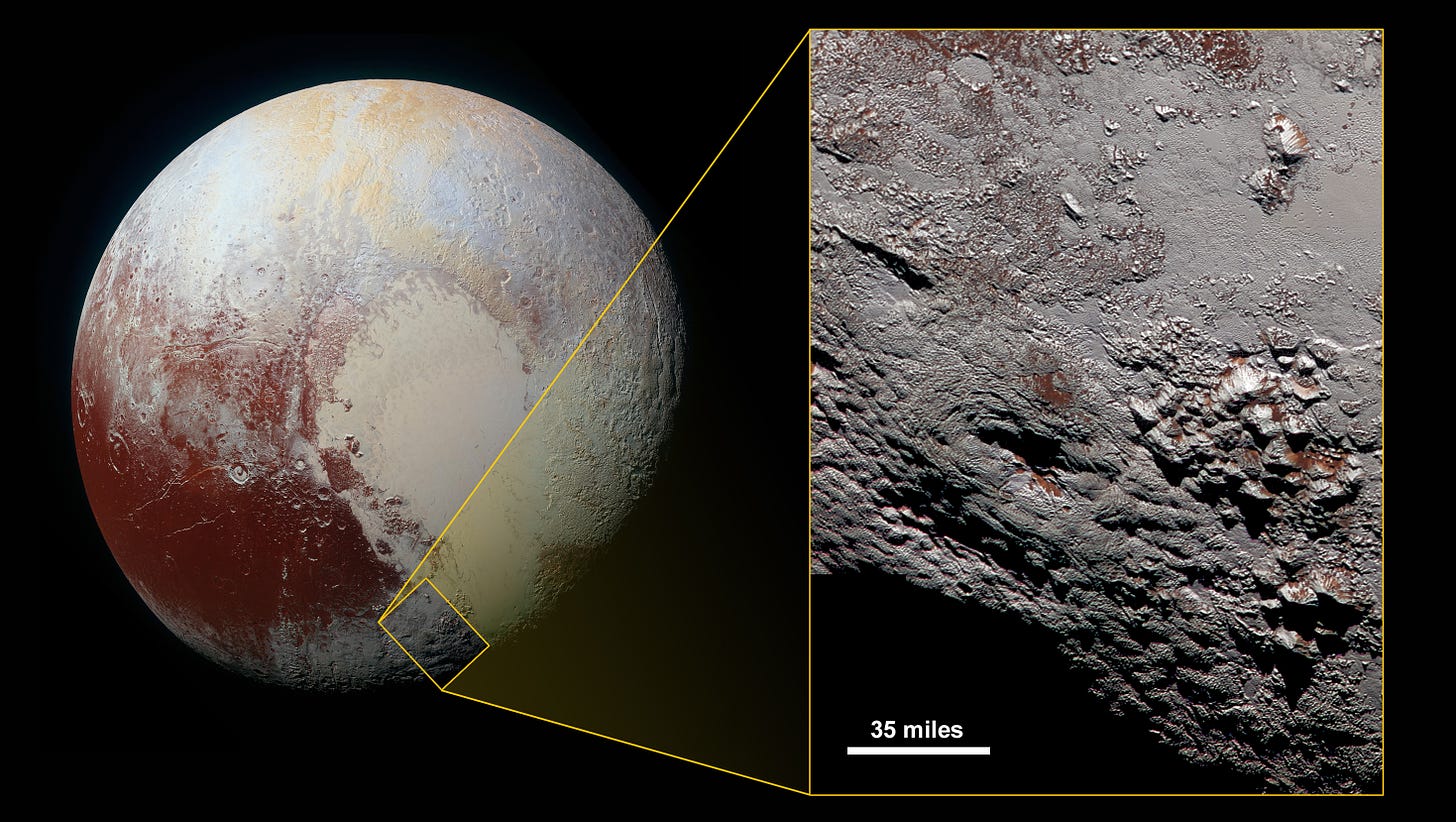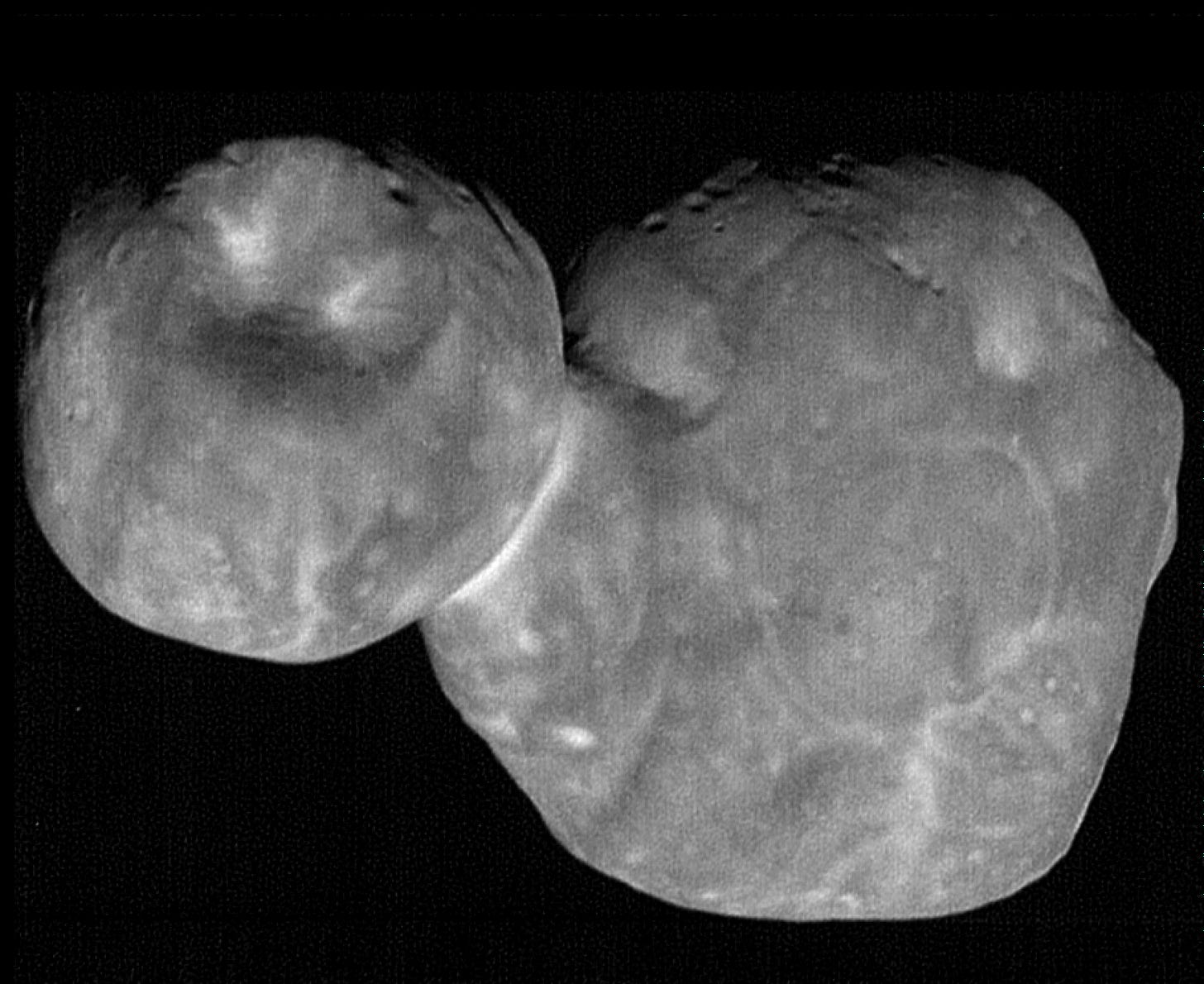This is from the new Planet Waves FM - Pacifica Radio program from Friday, Nov. 24.
Dear Friend and Reader:
I am aware that all scientists are being treated as heretics by a large portion of my audience, and by many in the health freedom space. I prefer not to make such a priori judgements, and instead find it more productive to learn some background, collect testimony and look at the data.

This past week, I had the privilege of speaking with Dr. Alan Stern, the principal investigator of the New Horizons mission to Pluto and the Kuiper Belt. I’ve never had a reason to doubt New Horizons, though I designed my questions to get a sense of whether the world’s leading expert knew what he was talking about — and from there I would learn what I could.
In this mailing, I’ve included the video of my interview with Dr. Stern (below), as well as the audio and my added commentary (as a podcast, above).
Journalists are Not Supposed to be Experts
I’ve spoken with countless Ph.D. scientists over the years, as a non-expert journalist. It’s essential for journalists, who are not supposed to be experts, to be able to size up the knowledge level of people who are supposed to know a LOT more than they do.
When questioning a claimed expert, I ask some informed questions, and I also use simple questions, such as, “Why is it dark at night?” and “What was the title of your Ph.D. thesis?” With Dr. Stern, my opening “little kid” question involved the discovery of the object that confirmed the Kuiper Belt, 1992 QB1 (now Albion). He gave a fantastic response, which you will hear right at the top of the interview.
You can be sure that as we interacted, Dr. Stern was checking to see whether I had a clue WTF I was asking about. He should be in a position to know.
Generally, when an expert source is full of it, the answers that come back are contradictory, incomprehensible garbage. With one minor exception (someone at UCLA who for some reason gave me partial information about moon rocks), I’ve have not found this to be true with astrophysicists. They tend to be interested when others take an interest in what they do. They give real answers.
Also, the honest and original ones don’t automatically hate me for being an astrologer. The more accomplished they are, the less judgmental they are — in my experience, and that of several of my colleagues.
They almost all have a fantastic sense of humor; that seems to be part of physics culture. That is a good example to set.
There are No Amateur Virologists
We have all been dragged through several tours of duty with virology, which is entirely mystifying and cannot be done at home. There is no way to verify or even investigate whether “furan cleavage sites S1/S2” have anything to do with you having the sniffles — or whether they exist.
Astronomers, on the other hand, depend on informed citizen involvement, and they respect the amateurs: for example, Boy Scout troops who have access to a telescope, or astrophotographers who get their stuff at B+H photo. There are no “backyard virologists.” There are innumerable very advanced backyard astronomers, who can repeat some of the work of the pros right from their house (that is the scientific method). Amateurs do things like discover comets.
Some facts can be at least partly verified using computer tools, but reality must match up. When you set up GPS on your home telescope and ask it to find Alcyone, you can easily tell whether it did or did not. You know what and where Alcyone is. There is no faking this.
For an example of citizen involvement in a major project, after the New Horizons flyby of Pluto, they headed for an object called 486958, then called Ultimate Thule, now called Arrokoth. Before Arrokoth was selected, amateur astronomers were tapped to find a suitable target close to the flight path. Ultimately their efforts failed, and Hubble was used.
The Numbers Must Check Out
Then there is the matter of data. As I discussed on my program last night, the data has to make sense — or there is a problem. “Empirical science” means by the numbers.
My question this morning was, what was the approximate trajectory change required to get from Pluto to Arrokoth? I wanted to see if I could figure it out myself. So I used a very high-quality astrological tool to get a sense of that. (I use this same tool to write the monthly horoscope):
Studying this data, the idea seemed perfectly plausible. Here is Arrokoth, by the way, a conjoined binary — good target. Certifiably interesting. This thing was photographed from right nearby, located at about 44 times the Earth/Sun distance.
I wrote to Dr. Stern today:
This data tells me that to get to Arrokoth, you had to go another approximately 11 AUs, but that the declinations were very close and RA was off by two degrees. It’s amazing that it happened to be in the same proximate direction; it seems you had to tune the trajectory and just keep going for a while.
However “for a while” was the approximate distance (a little more) from the Sun to Saturn! Then make sure your mathematics got you within a few thousand kilometers. (I still think it’s impressive that a pilot can find Easter Island.)
I asked him how they did all that. He told me to go read his book!
Good answer. I also learned grousing around that the necessary course adjustment was performed with four engine firings between Oct. 22 and Nov. 4, 2015 (soon after the Pluto flyby). To do this, they used one-third of the trajectory correction fuel supply.
Had this been virology (in my considerable experience) Arrokoth would either not exist, or be so far from Pluto you could never get there. So, no, astrophysics is not “just like virology.” It is just exactly NOT like virology. It’s much more fun, and with physics, on some level everything is testable. (We can get into quantum fields and particles another time; that is a separate matter.)
I’ll discuss this more next week. Comments welcome by all.
Thanks for tuning in…
.


















Share this post